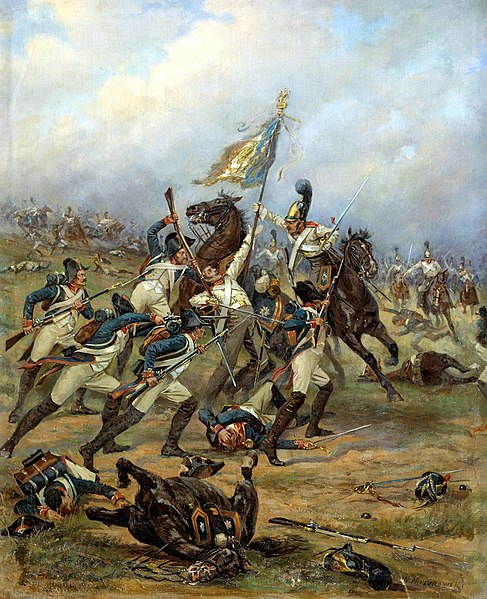The Presentation of Colours is a military ceremony that marks an anniversary or significant event in the history of a particular regiment or similar military unit. This involves the presentation of a new version of the regimental colour to a regiment or equivalent formation in their respective armed forces service branch. This is a traditional ceremony that was pioneered by the British Armed Forces, and is today used in most Commonwealth countries.
The Coldstream Guards laying up their old colours and receiving the new colours in October 2013.
The regimental colours of the 5th Royal Inniskilling Dragoon Guards, displaying the battle honours awarded to the regiment.
Hindu priest garlanding the flags of the 35th Bengal Light Infantry at a presentation of colours ceremony, circa 1847.
The old colours of the Royal Regiment of Canada are marched off during the presentation of new colours in November 2009.
In military organizations, a colour guard is a detachment of soldiers assigned to the protection of regimental colours and the national flag. This duty is highly prestigious, and the military colour is generally carried by a young officer (ensign), while experienced non-commissioned officers are assigned to the protection of the national flag. These non-commissioned officers, accompanied in several countries by warrant officers, can be ceremonially armed with either sabres or rifles to protect the colour. Colour guards are generally dismounted, but there are also mounted colour guard formations as well.
A colour guard detachment during the opening ceremony for the North Atlantic Council and Military Committee SEA Day Exercise.
Fight for the flag between French line infantry and Russian Guard cuirassiers at the battle of Austerlitz (1805).
Colour guard of the Chinese People's Liberation Army.
The old colours of the Royal Regiment of Canada are marched off by colour guards, during the presentation of new colours to the regiment.







